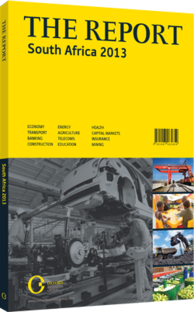Mobile internet on the rise: Increasingly affordable mobile data is connecting more and more of the country
While voice revenues grew in 2012 as operators successfully released attractive packages onto the market, high levels of penetration and limited scope to cut prices further have meant that data services are an increasingly important field of competition in the telecoms sector. Data growth has been impressive in recent years, albeit from a low base, and operators are already gearing up for the next phase, which will be the introduction of long-term evolution (LTE) networks offering high-speed mobile broadband.
Smartphones
All the GSM companies are intensifying their efforts to increase data take-up and usage. “Data will be the next big playing field for the sector for the next two years,” Zaid Gardner, a telecoms expert and senior associate at Edward Nathan Sonnenbergs, a law firm, told OBG. According to MTN, nationwide data consumption grew by 200% in 2011 alone, with smartphone usage rising 128% to 3.6m users. The number of broader data subscribers – including USB modems (or “dongles”), reached 10.9m.
The scope for growth is substantial, with usage levels still fairly low. As of early 2013, 16-17% of mobile handset owners also had smartphones, but around half of these owners only use them for voice services. Some of the other 50% use data-driven value-added services (VAS), such as mobile applications, only rarely.
Some see retail and banking as the ways to expand. "South Africa is seeing a major convergence between the financial services, retail activities and telecommunications infrastructure, with mobile banking and point-of-sale banking experiencing huge growth," Adam Craker, CEO of IQ Business, told OBG.
Challenges
Low levels of consumer awareness about the range of VAS available may be one challenge; operators may be missing out on generating higher ARPU because clients do not know what they can do on their new telephones. Another limiting factor is income; smartphones and data services are beyond the reach of the poorest South Africans, who make up a substantial part of the population. However, with costs coming down, and hire-purchase deals increasingly available (subscribers can obtain a Nokia smartphone for as little as R89 ($10.85) per month for 24 months), access for the middle classes and even lower-income groups above the poverty line is improving.
“Initially, cost was limiting data use, but there has been a steady decrease over the last years,” Thecla Mbongue, senior research analyst at Informa Telecoms & Media, an analysis firm, told OBG. “Data is now growing very, very strongly.” Mbongue estimated that 3G coverage now reaches around 60% of the population. With data usage in rural areas still relatively low, operators have been cautious about expanding infrastructure in more remote parts of the country.
LTE Roll-Out
In October 2012 Vodacom became the first South African telecom to launch a commercial LTE network, using 70 base stations in Johannesburg. Then in November of that year, MTN followed suit, covering areas of Johannesburg, Pretoria and Durban. Cell C also started operating its first two LTE base stations in November, in the Johannesburg business district of Sandton, followed by roll-out in Durban and Cape Town. But these are still early days for LTE in South Africa. Currently, it is something of a marketing exercise, preparing customers for the long process of switchover. LTE services are only available in major cities such as Johannesburg, Pretoria and Cape Town.
Full LTE roll-out will necessitate allocation of 2600-and 800-MHz spectrum, which will take six to 12 months for approval and a similar timeframe for execution. The roll-out of LTE is likely to entail shutting down some 3G capacity to free up spectrum, and far more base stations will be needed to run widespread 2600 MHz.
After a slow start, the South African mobile data market has been growing strongly in recent years. A growing proportion of South Africans access the internet primarily through mobile devices, be they handsets or dongles. Data is increasingly at the centre of operators’ strategies on a competitive market, and rising usage should help buoy ARPU in the medium term.
You have reached the limit of premium articles you can view for free.
Choose from the options below to purchase print or digital editions of our Reports. You can also purchase a website subscription giving you unlimited access to all of our Reports online for 12 months.
If you have already purchased this Report or have a website subscription, please login to continue.

